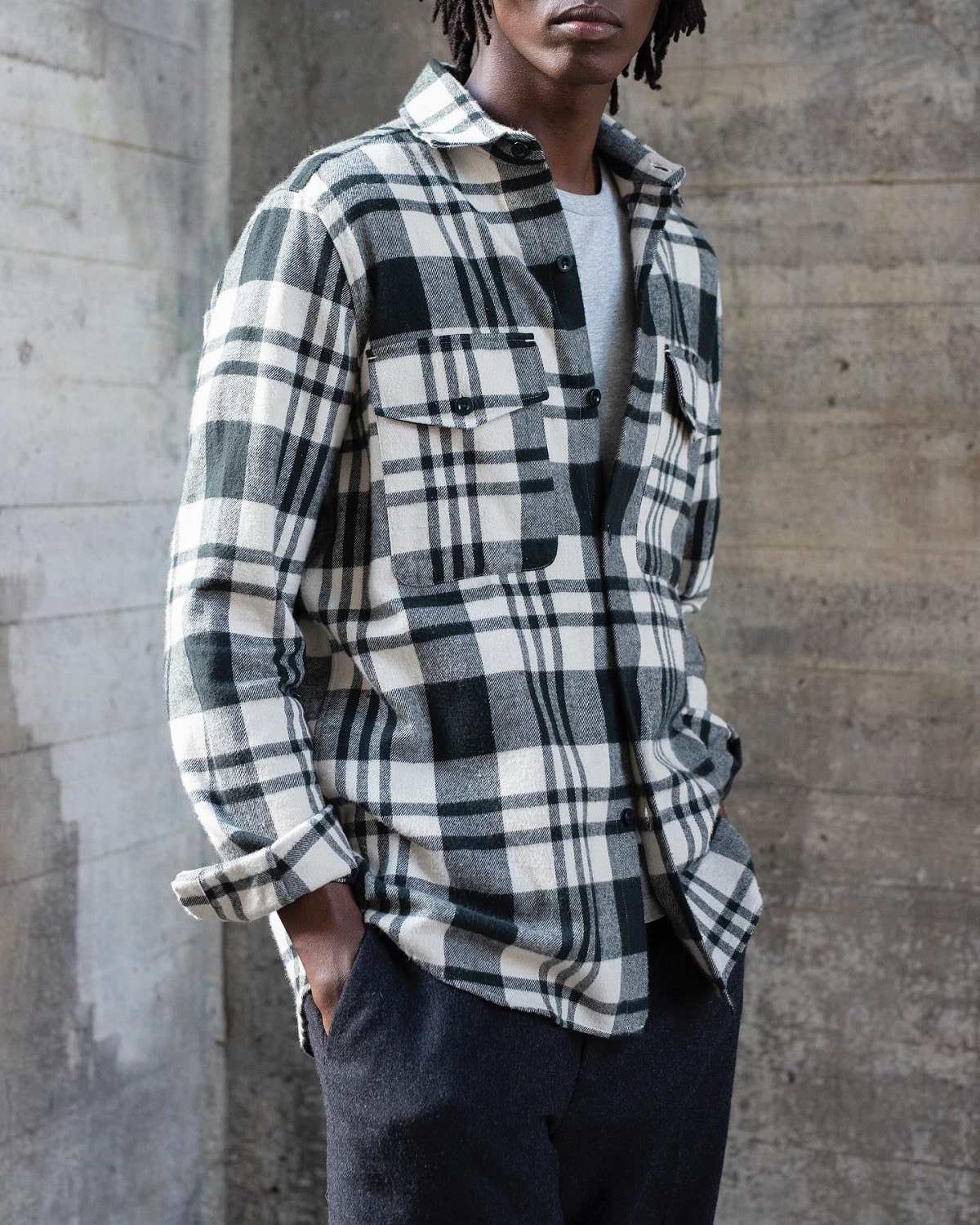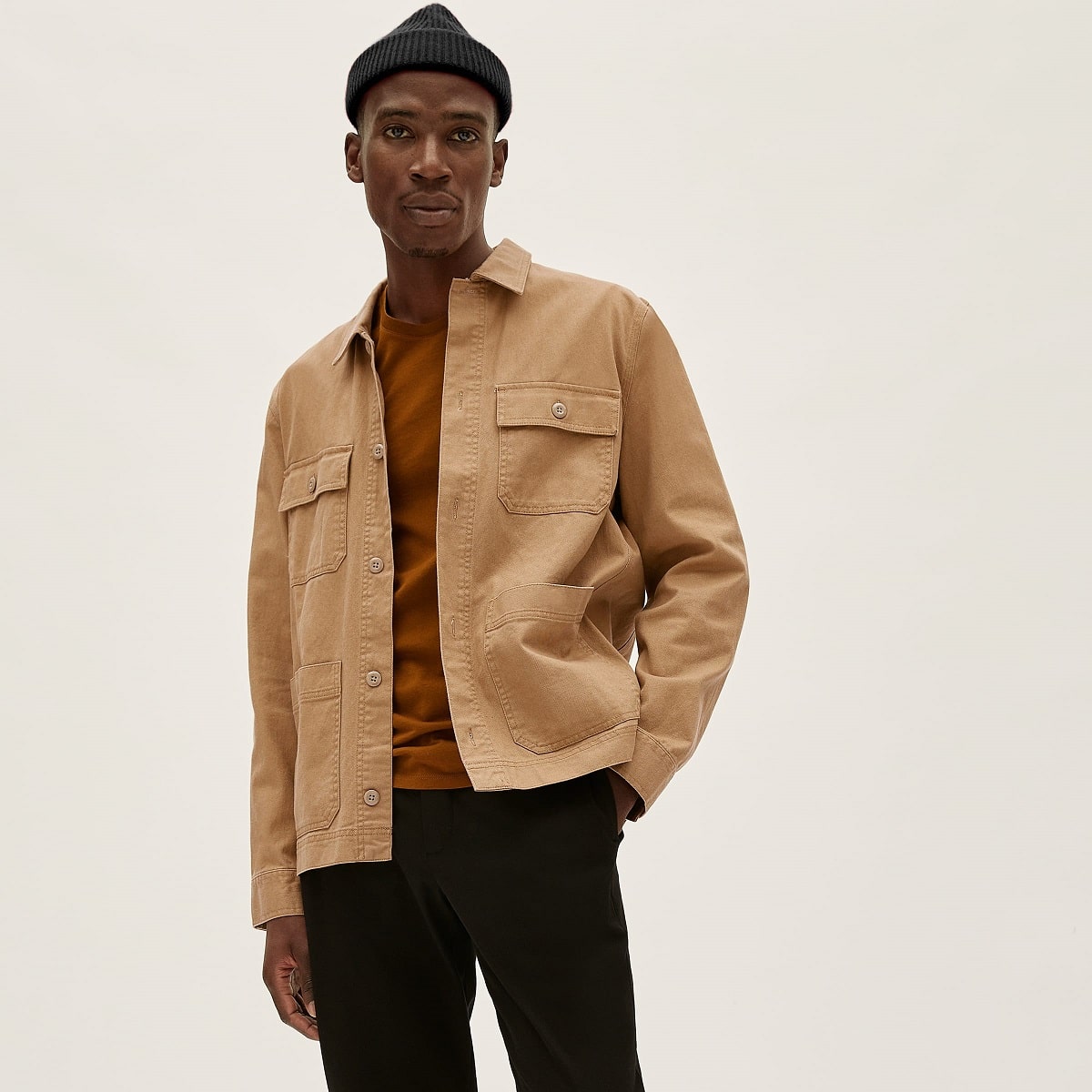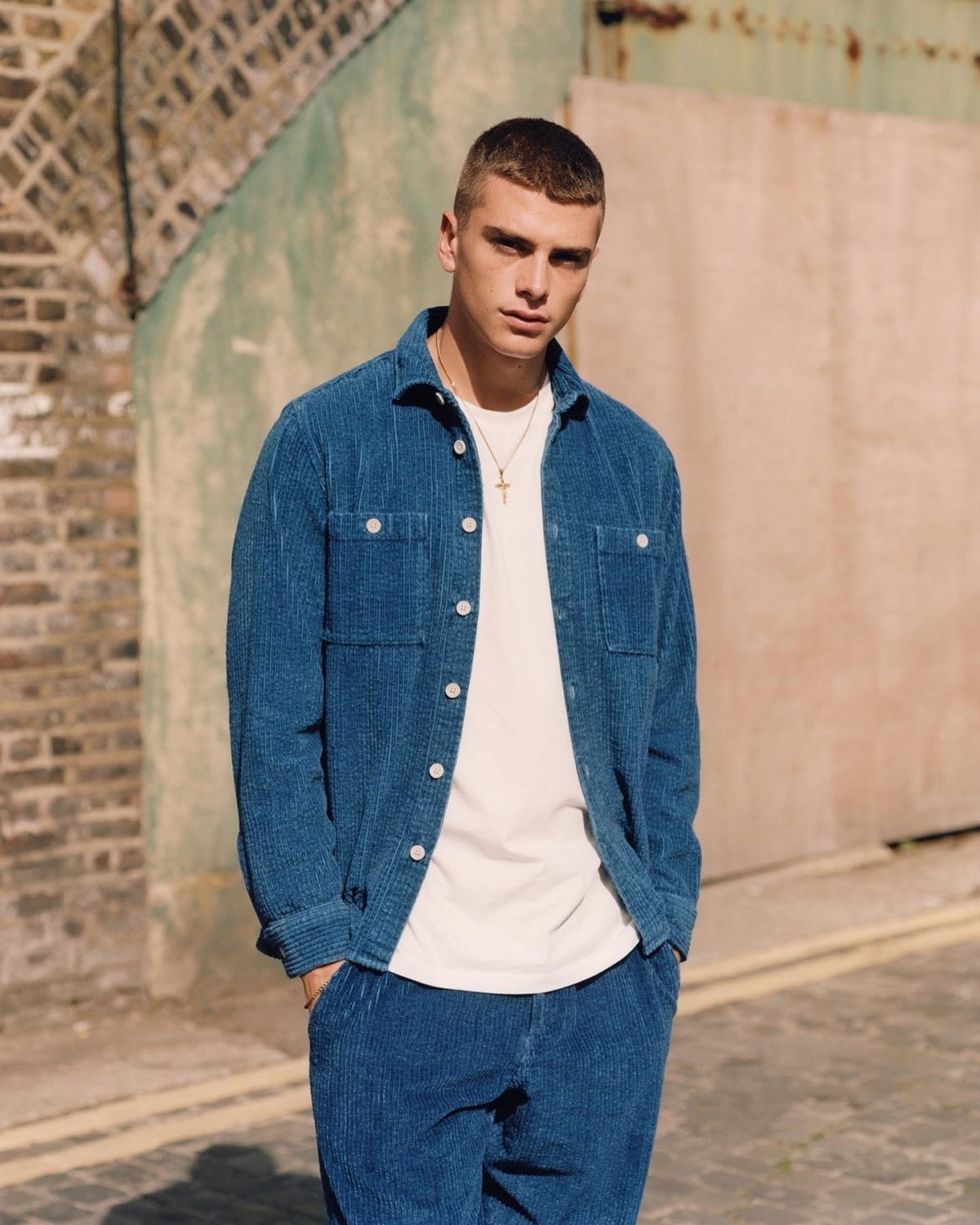1
HOME > Essentials >
WHY THE SHIRT-JACKET REMAINS A MENSWEAR ESSENTIAL
Written by Ivan Yaskey in Essentials on the 10th November 2021

Abbreviate it as a shirt-jac – or merge it all the way with “shacket.” Or, stand out from the pack with “overshirt.” Whatever you want to call this quintessential transitional garment, the shirt-jacket became a thing roughly four years ago and has stuck around through its usefulness.
What is a Shirt-Jacket?
The swift demarcations defining a man’s wardrobe have evolved into hybrid garments. Naming conventions like “athleisure” imply at least two uses and situations. At the same time, concepts like suit separates literally deconstruct more formal items, and simply adding a pair of dress sneakers and a T-shirt underneath transforms the whole vibe.
Shirt-jackets exist in two transitional planes. One, the garment itself is the very definition of a hybrid. The exterior physically embodies a button-front shirt, from the closure to the collar to the occasional shirttail hem. Yet, construction delivers what’s basically a lightweight jacket, in varying degrees: thicker, wool-based fabrics, insulated lining, and hand pockets.

Secondly, shirt-jackets sit on par with other lightweight jackets in your wardrobe: denim truckers, bombers, shearling-trimmed pilot jackets, chore coats, field jackets, and anything made of fleece or knit. You bring these garments out for transitional weather – most of autumn and a good deal of spring, until those humid days start creeping in. On those mornings you notice a nip in the air, a shirt-jacket fits right over any short- or long-sleeve shirt you own. It feels just right – not like you’re carrying around anything extra – and in an office environment, it adds just a bit more weight against the always-present air conditioning.
Yet, winter arrives, and at least in this part of the world, that brings conditions just on the cusp of freezing to those requiring a layer under your parka or trench coat. In speaking about transitions, the shirt-jacket also steps up in these duties – perhaps more so than other lightweight outer layers – by offering a more streamlined, layerable form. They’re ready to hold onto body heat right below any leather jacket, peacoat, trench, or puffer you own, and don’t come across as awkward – is he wearing a jacket indoors? – once you take off your heavier coat.
Showing the shirt-jacket’s mileage has extended far past its initial novelty status, you’ll encounter multiple fabrications. There’s the heavier flannel, the thicker wool shirt, the insulated button-front, and the workwear-inspired garment. Checks to solids to more out-there prints abound, giving this more practical garment a touch of personality – even if you’re the type to keep things classic.
To sum up what the shirt-jacket is, it’s just enough: Not too much, not too little, and just right for when the weather lacks predictability.

Why the Shirt-Jacket’s Still Here
It’s Seriously Versatile
As we pay more attention to what’s in our wardrobes and where and how we can wear what’s there, shirt-jackets go the distance and show they’re ready for a multitude of possibilities. They’re just right for transitional weather, particularly something made of naturally water-resistant, warmth-retaining wool. At the same time, you can keep it in rotation through the winter months, especially if you live in regions with fluctuating climates or that require layering to remain comfortable outdoors. Basically, save for the summer months, you’ll always be reaching for this garment in your wardrobe.

You Have Options
If you think back to 2016 or so, the shirt-jacket initially came across as a beefed-up flannel shirt. After all, back in the ‘90s and ‘00s, didn’t many of us wear flannel like this in some fashion – likely Grunge influenced – by throwing it over a T-shirt, mock neck, or flannel?
Yet, while shirt-jackets tend to come from a similar place of construction – specifically, plaid prints and warmth-retaining fabrics – that’s where the similarities end. Especially for colder climates, expect a second layer on the inside – for instance, something quilted or even faux shearling. This gives the construction more heft, hence making it feel a bit like a jacket while still retaining its flannel-like looks and style.
Of course, flannel’s a relatively easy comparison. This standard silhouette has illustrated its versatility in other areas – mainly, how it can be constructed. For starters, you’ll run across several heavier-weight wool options that feel a bit like a peacoat – and look as if you spliced this military-inspired garment with a button-front shirt. Then, we’re also spotting fully quilted shirt-jackets. These resemble those lightweight, quilted coats we spotted a few years back, perhaps with the character of a puffer. Any wool or flannel material’s absent, and what results resembles more of a collared and buttoned nylon midlayer you might see a hiker or backpacker put on for their late-autumn outings.
Beyond this, the explosion of prints out there – from stripes to florals – hasn’t bypassed this garment. In turn, if you’re someone who prefers classic or practical construction with a bit more panache and colour, you’ll likely stumble across the right combination.

The Workwear Edit
While workwear-as-casual-wear makes us all look like we’re off to a construction site, proper work garments themselves step over the “Is it practical or is it fashion?” line to fully reflect the former, although consumers may seek it out for the latter reason.
What does this mean for the shirt-jacket? The garment, in its most classic sense, functions as a piece of workwear, delivering the durability and insulation needed to spend time getting stuff done outdoors. That means, however you envision or intend to wear it, there’s a likelihood that what you’re purchasing will last and keep on doing its job.


Trending
2
3
4
5
6
7
8
9
10










